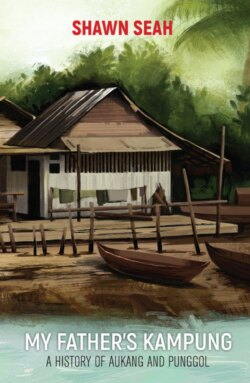Читать книгу My Father's Kampung - Shawn Seah - Страница 15
На сайте Литреса книга снята с продажи.
Endnotes
Оглавление1 This section is adapted from Shawn Seah, Seah Eu Chin: His Life and Times (Singapore: Pagesetters, 2019).
2 According to a plaque by the Urban Redevelopment Authority at the Yueh Hai Ching Temple, “Yueh Hai Ching Temple”.
3 Tan Gia Lim, An Introduction to the Culture and History of the Teochews in Singapore, (Singapore: World Scientific, 2018), p.44. She cited several examples, such as William Farquhar’s report to Raffles in 1822 and colonial government records detailing a sale of a plantation land by some planters with names likely of Teochew origin. George Yeo, then-Minister for Trade and Industry, also made a speech which referred to this fact at The Teochew Experience: An Exhibition on the Teochew Community in Singapore, 3 October 2002.
4 Ibid., p.45.
5 These statistics are based on Edmond Lee Eu Fah’s paper, “Profile of the Singapore Chinese Dialect Groups”, which drew from data from the Population Censuses 2000 and 1990. Incidentally, the Cantonese were number three in 2000, numbering 386,000 (in 1990, there were about 324,000).
6 Department of Statistics Singapore, Singapore Census of Population 2010 Statistical Release 1: Demographic Characteristics, Education, Language and Religion (2011).
7 This paragraph is based on Ian Johnson, “In Singapore, Chinese Dialects Revive After Decades of Restrictions”, in The New York Times, 26 August 2017.
8 This section is based on Chui Huay Lim Club, “Introduction”. Source: http://www.chuihuaylimclub.com/introduction.html. Updated 2013. Accessed 10 April 2019.
9 Shawn Seah, as quoted in “Teochew v Teochew: From ‘twin brothers’ to combatants in court”, in The Sunday Times, 10 March 2019, p. A4.
10 This section is based on Teo Cheng Wee, “Growing Teochew Roots”, in The Straits Times, 10 November 2014.
11 Ibid.
